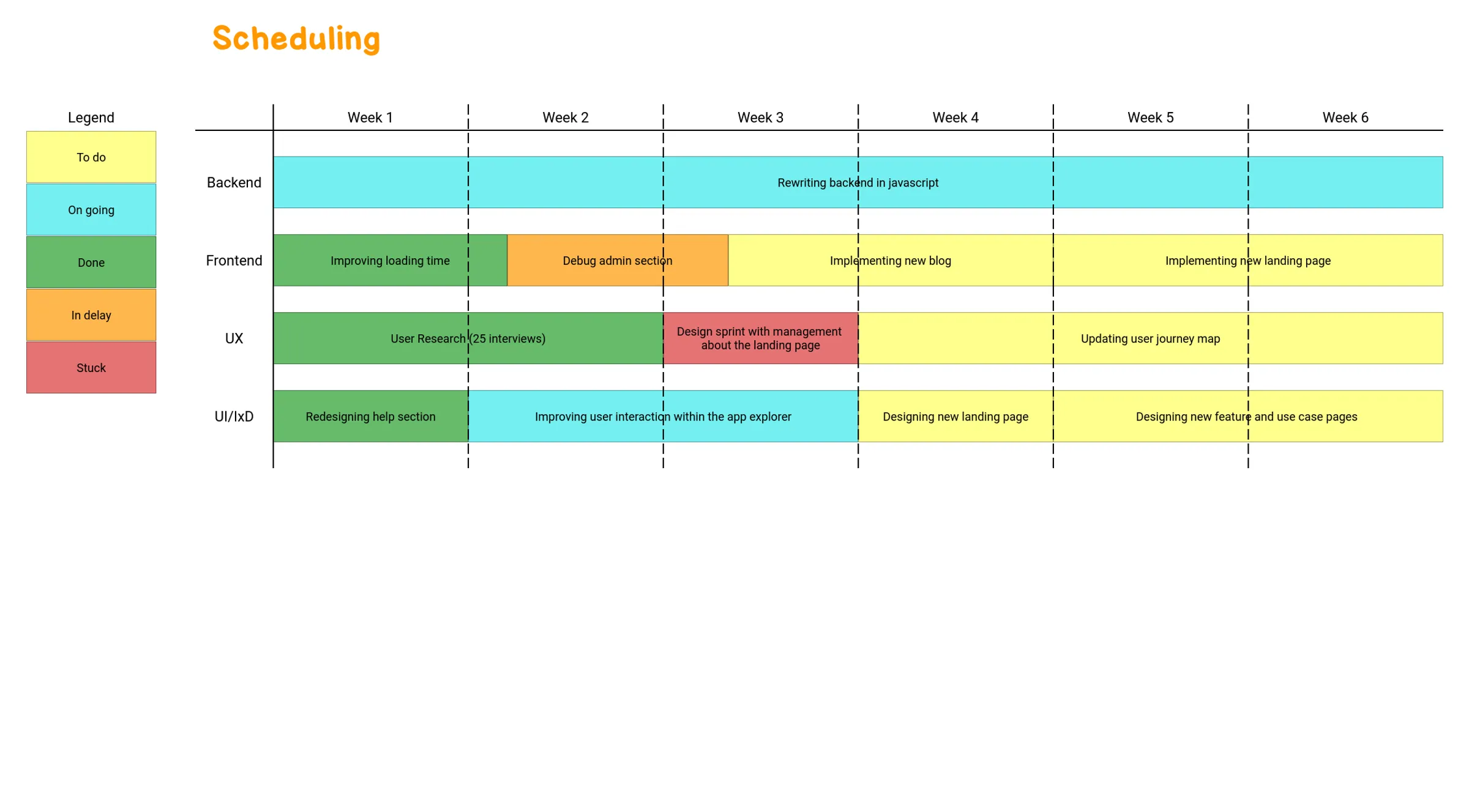Scheduling Plan

What is a Scheduling Plan?
A Scheduling Plan is a tool used to schedule and optimize the use of processes and resources in accordance with production demands. It allows for an accurate representation of the scheduling of multiple tasks over time, while taking into account the limitations imposed by resources.
The Scheduling Plan is designed based on two axes:
- The first axis is a horizontal time axis that distributes tasks linearly based on their duration.
- The second axis is a vertical axis that lists the processes and resources mobilized, such as personnel, machines, and production units.
Creating a Scheduling Plan is extremely beneficial as it helps in identifying limiting processes and resources in your organization. This information can be used to adapt and optimize your resources to improve your organization’s productivity.
How to Build a Scheduling Plan?
A Scheduling Plan is typically created in five steps:
-
Step 1: Define tasks
The first step is to precisely define the nature and workload associated with each task that needs to be performed. It is important to estimate the time required to complete each task while considering the production capacities involved.
-
Step 2: Identify processes and resources
The next step is to list all the resources that may be involved in the production process, such as personnel, machines, production units, workspaces, etc.
-
Step 3: Distribute the workload
The third step involves distributing the workload generated by each task linearly across each process or resource mobilized. This must be done in a way that the tasks follow one another over time, while respecting the logic of the production processes in which they are part. Possible series changeover times, transport between two production units, cleaning, etc., should be taken into account.
-
Step 4: Establish a schedule
After distributing the workload, you need to add actual dates to the Scheduling Plan for the production. This will help establish a precise schedule of start and end dates for each task.
-
Step 5: Monitor and adjust
The Scheduling Plan is a dynamic management tool. You will need to monitor its execution and adjust it if necessary, particularly in the event of unforeseen events such as production delays, machine breakdowns, etc.